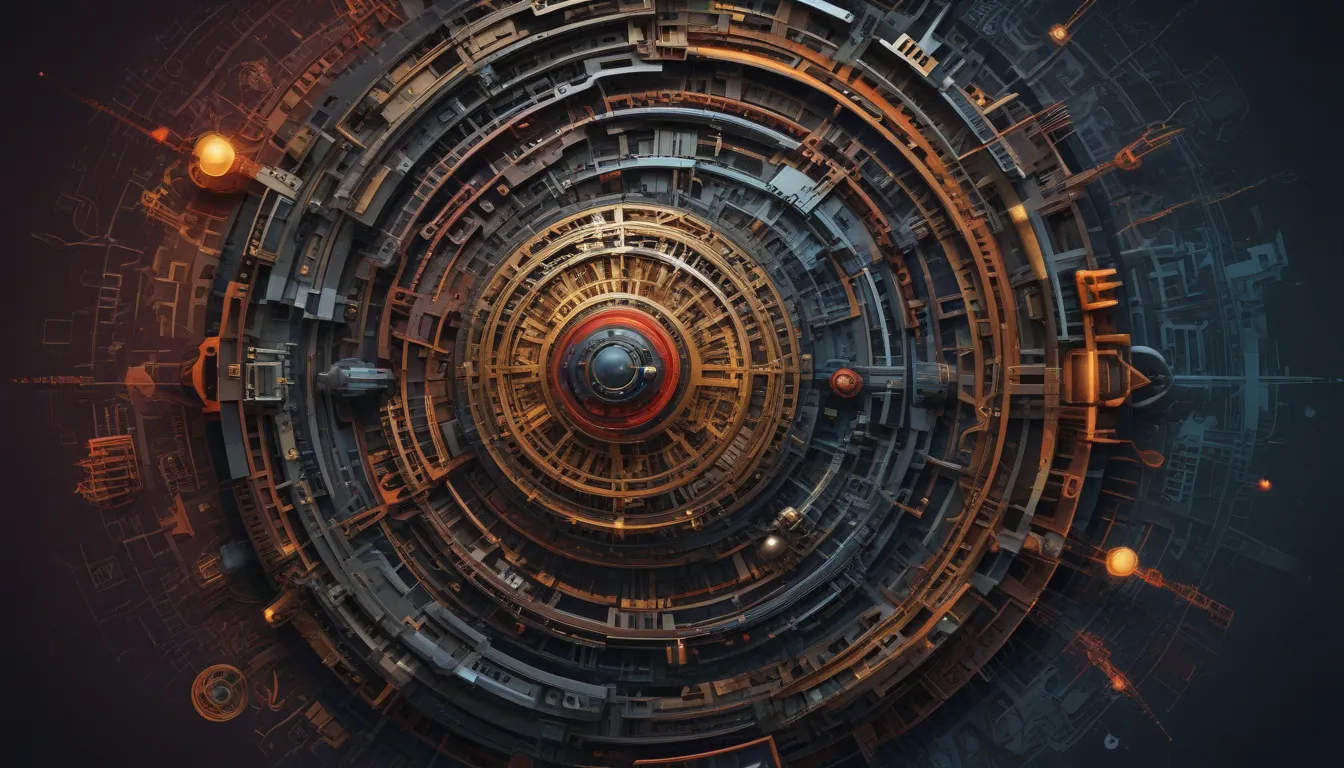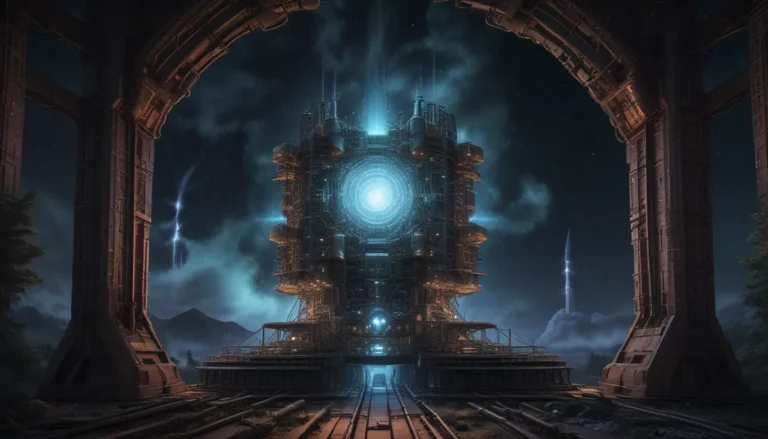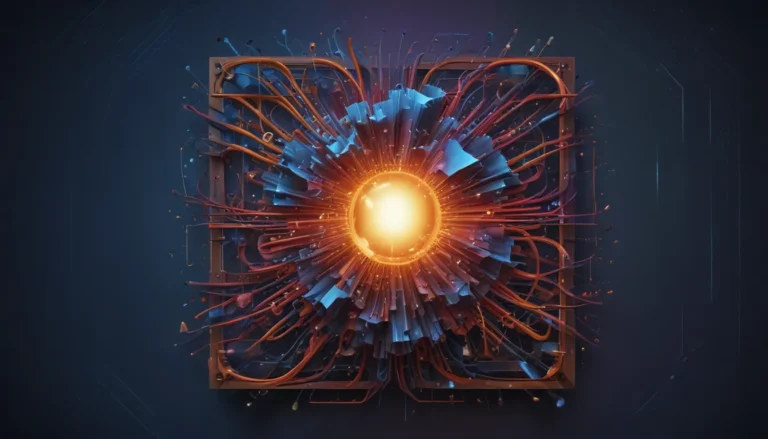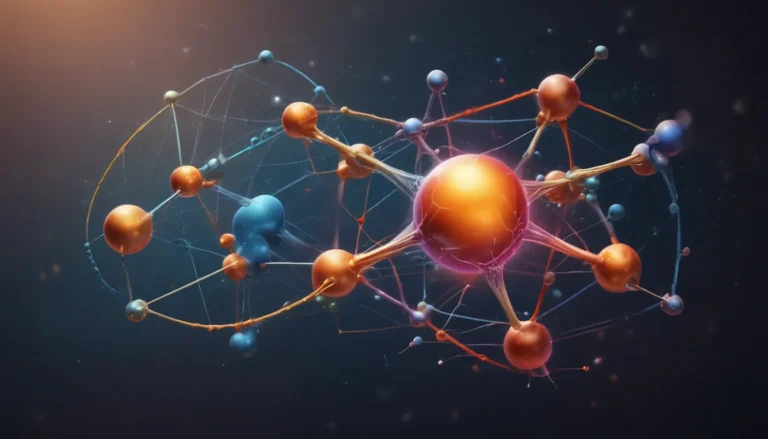A Note About Images: The images used in our articles are for illustration purposes only and may not exactly match the content. They are meant to engage readers, but the text should be relied upon for accurate information.
Chemistry enthusiasts, rejoice! Dive into the captivating world of coordination complexes, where molecules and ions come together in intricate formations around a central metal atom. These tiny chemical machines play a vital role in catalysis, materials science, and biochemistry, offering a myriad of applications and properties that continue to astonish researchers worldwide.
Unveiling the Wonders of Coordination Complexes
Imagine coordination complexes as teams of atoms surrounding a metal, each playing a unique role to create a powerful chemical entity with distinct properties. These compounds can interchange their “players,” much like superheroes swapping powers, allowing for a dynamic range of modifications to suit various applications. From the boundless realm of biology to the vibrant landscape of environmental science, coordination complexes weave a tapestry of versatility that drives innovation and discovery in the scientific realm.
Coordination Complexes: A Closer Look
At the core of coordination complexes lies a central metal atom or ion, enveloped by ligands—atoms, ions, or molecules that donate electron pairs to the metal. This intricate dance of electrons results in the formation of stable structures with diverse properties, making coordination complexes a cornerstone of modern chemistry.
The Versatility Unveiled
The beauty of coordination complexes lies in their adaptability, showcasing a kaleidoscope of possibilities with a myriad of metals and ligands that can be employed in their synthesis. This versatility enables researchers to tailor these compounds for a wide range of applications, from pharmaceuticals to catalysts.
A Splash of Colors and Absorption Spectra
Step into the world of transition metal complexes, where vibrant colors emerge as a result of specific light absorption. This mesmerizing phenomenon not only captivates the eye but also reveals valuable insights into the electronic structure and properties of coordination complexes.
Chelating Ligands: The Multitaskers
Enter the realm of chelating ligands, versatile molecules with multiple binding sites capable of forming coordination complexes with more than one metal ion. This unique property finds applications in pharmaceuticals and catalysts, unlocking new avenues for innovative research.
The Dance of Stability and Thermodynamics
The stability of coordination complexes is a delicate balance influenced by factors such as the strength of metal-ligand bonds and overall thermodynamics. Understanding these thermodynamic principles sheds light on the intricate dance of electrons within these compounds.
Illuminating the Electronic Structure
Delve into the realm of electronic structure, where the arrangement of metal d-orbitals and ligand orbitals determines the reactivity and properties of coordination complexes. This intricate interplay of electrons unveils a world of possibilities for researchers.
Coordination Complexes in Biology
Embark on a journey through the biological landscape, where coordination complexes play a pivotal role in enzyme catalysis, oxygen transportation, and other vital functions within living organisms. These compounds serve as essential components in the intricate machinery of life.
Embracing Isomerism
Explore the fascinating world of isomerism within coordination complexes, where structural, geometric, and optical isomers unveil distinct physical and chemical properties. This diversity in isomerism offers researchers a rich tapestry of possibilities to explore.
The Catalysts of Change
In the realm of chemical reactions, coordination complexes stand tall as catalysts, altering reaction pathways and accelerating rates of reaction. Their catalytic activity opens doors to novel approaches in chemical synthesis and beyond.
Decoding the Coordination Number
The coordination number of a coordination complex dictates the number of ligands attached to the central metal atom or ion, influencing the geometry and stability of the complex. This fundamental concept provides insights into the underlying structure of these compounds.
Navigating Ligand Field Theory
Enter the realm of ligand field theory, a framework that elucidates the electronic structure and properties of coordination complexes based on interactions between the metal ion and ligands. This theory unlocks a deeper understanding of the behavior of coordination complexes.
The Marvel of Metalloproteins
Embark on a journey through metalloproteins, where coordination complexes with metal ions play essential roles in biological processes such as oxygen transport and electron transfer. These compounds serve as the building blocks of life, driving critical functions within living organisms.
Magnetic Mysteries Unveiled
Peer into the world of magnetic properties within coordination complexes, where paramagnetism, diamagnetism, and ferromagnetism unveil a range of behaviors depending on the arrangement of unpaired electrons and magnetic spins. These magnetic properties offer valuable insights into the behavior of these compounds.
Unveiling Crystal Field Theory
Dive into the realm of crystal field theory, a framework that explains the colors and properties of coordination complexes by considering the interaction between the metal ion and ligands in terms of d-orbital splitting. This theory sheds light on the intricacies of color and structure within these compounds.
The Industrial Frontier
In the realm of industry, coordination complexes find myriad applications as catalysts for chemical processes, pigments for dyes, and components of electronic devices. Their versatility and stability make them invaluable assets in driving technological advancements.
Environmental Guardians
Step into the realm of environmental significance, where coordination complexes play a crucial role in the transportation and cycling of metal ions in natural systems. These compounds also find applications in pollutant remediation processes, offering solutions to environmental challenges.
A Marvelous Conclusion
In closing, coordination complexes stand as a marvel of chemical ingenuity, offering a rich tapestry of properties and applications that continue to intrigue researchers worldwide. From their versatile nature to their role in biological systems, these compounds unfurl a world of possibilities in chemistry and beyond. Embrace the enchanting realm of coordination complexes, where innovation and discovery intertwine to shape the landscape of modern science.
FAQs: Curious Minds Inquire
-
Q: What is a coordination complex?
A: A coordination complex is a chemical compound comprised of a central metal ion or atom bonded to one or more ligands, which are electron donor molecules or ions. -
Q: Why are coordination complexes important?
A: Coordination complexes play a crucial role in various chemical reactions, catalysis, and biological processes. They also find applications in medicine, industry, environmental science, and materials science. -
Q: How are coordination complexes formed?
A: Coordination complexes are formed through coordination chemistry, where the metal ion or atom acts as a Lewis acid, accepting electron pairs from ligands that act as Lewis bases. -
Q: What are ligands?
A: Ligands are molecules or ions that donate electron pairs to the central metal ion or atom in a coordination complex, forming coordinate bonds that stabilize the complex. -
Q: How can coordination complexes be used in medicine?
A: Coordination complexes can be designed to interact selectively with specific biological targets, making them valuable tools in drug development and therapeutic applications.
Embracing the Marvel of Coordination Complexes
In the realm of chemistry, coordination complexes stand as beacons of innovation and discovery, offering a vast canvas of possibilities for researchers to explore. From their intricate structures to their diverse applications, these compounds continue to captivate the scientific community with their versatility and significance. Join us on a journey through the marvels of coordination complexes, where science and curiosity converge to unveil the wonders of modern chemistry.






